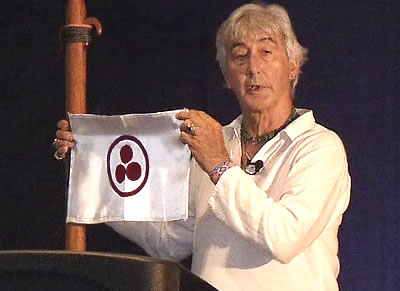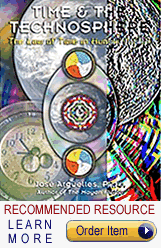JOSE ARGUELLES - ARTIST AND NEW AGE LEADER

FAMOUS VISIONARY ARTIST, AUTHOR, EARTH DAY & WHOLE EARTH FESTIVAL FOUNDER

In referencing general humanity's great unfamiliarity with the Tzolkin calendar, Dr. Argüelles stated that it initially "appears as one of those bizarre, numerological anomalies. But then, did the I Ching seem any different to Leibnitz, Hegel, or Jung when they first encountered it?" Consequently, for the entirety of his adult life Argüelles was consumed with the attempt to familiarize this planet with the teachings of our Mayan ancestors; and in particular, their utilization of the Tzolkin calendar as a means for psycho-spiritual connectedness with our solar system's galactic consciousness and the "harmonic influences" of our local universe. Notably, unlike all the other calendars utilized in the overall Mayan calendar system, the Tzolkin is unique in that it's humanity's only example of a calendar derived solely from a mathematical principle (the 13x20 matrix) and having no obvious relation to any astronomical reoccurrence of the Earth, the Moon, or the Sun. In the Mayan Factor, Argüelles wrote of it stating: "Of course, the Tzolkin is just a code. So is the alphabet with which we write. Yet, as we know, the alphabet encodes a language, and the person who knows how to write that language with the alphabet (26 letters) can command tremendous power and communicate at least a suggestion of the knowledge and wisdom of the universe. In the same way, knowing the code language of the Tzolkin, the Mayan harmonic module, can open up channels of understanding and communication with equal if not greater power than is available to us through the alphabet. For number, no different than symbol, is a condensation of over-tones and levels of meaning. And each individual number is a resonant field unto itself. It is for this reason that only thirteen numbers are necessary to describe the entire complex we call galactic being - thirteen numbers each occupying a possibility of twenty positional places, for a total of 260 permutations."
With his total immersion into a study of the ancient Mayan calendar system, Dr. Argüelles came to believe that humanity's 16th Century
adoption of the modern Western calendar is a key deterrent to our progressive evolution and eventual reconnectedness with the powers of this
 galaxy and that which is beyond. Thus, in his attempt to familiarize the public with the wisdom of our ancient Mayan ancestors, Argüelles sought to
popularize two of the main precepts infused within the ancient Mayan calendar system. Respectively, they are the regularity of
period cycles, and a personalization of the days.
galaxy and that which is beyond. Thus, in his attempt to familiarize the public with the wisdom of our ancient Mayan ancestors, Argüelles sought to
popularize two of the main precepts infused within the ancient Mayan calendar system. Respectively, they are the regularity of
period cycles, and a personalization of the days.
In his 2002 book entitled, Time & The Technosphere: The Law of Time in Human Affairs, Argüelles proposes that the irregularity of days in the months of our currently used Gregorian calendar are leading us away from a natural psychic (and spiritual) connection with the harmonics (or 'synchronic order') of our galaxy which are more easily attained through certain mathematical formulae being applied into our planetary calendar count(s) - such as those that were utilized by the ancient Mayan calendar. While some so-called professional Mayanists of academia and other scholarly realms would be content to stay stuck in the muck and mire of speculation about what our ancients (not merely exclusive to the Maya) may or may not have believed, Argüelles was the living example of our era's new type of man who will delve deeply into, and more importantly, actually attempt to apply many of the new considerations now being re-introduced to the forefront of human society through a study of what our ancient cultures had emphasized. A perfect example of this would be the development of his Dreamspell calendar (aka the "13 Moon calendar") based on 'some' of the mathematical principles of the Mayan calendar system. Similar to the 365 day Mayan Haab calendar, Argüelles' Dreamspell calendar uses consecutive even months to create a regularity in the monthly calendar count as opposed to the unevenness in length of months like that which is experienced with our modern 365 day Gregorian calendar. ( page 4 )

